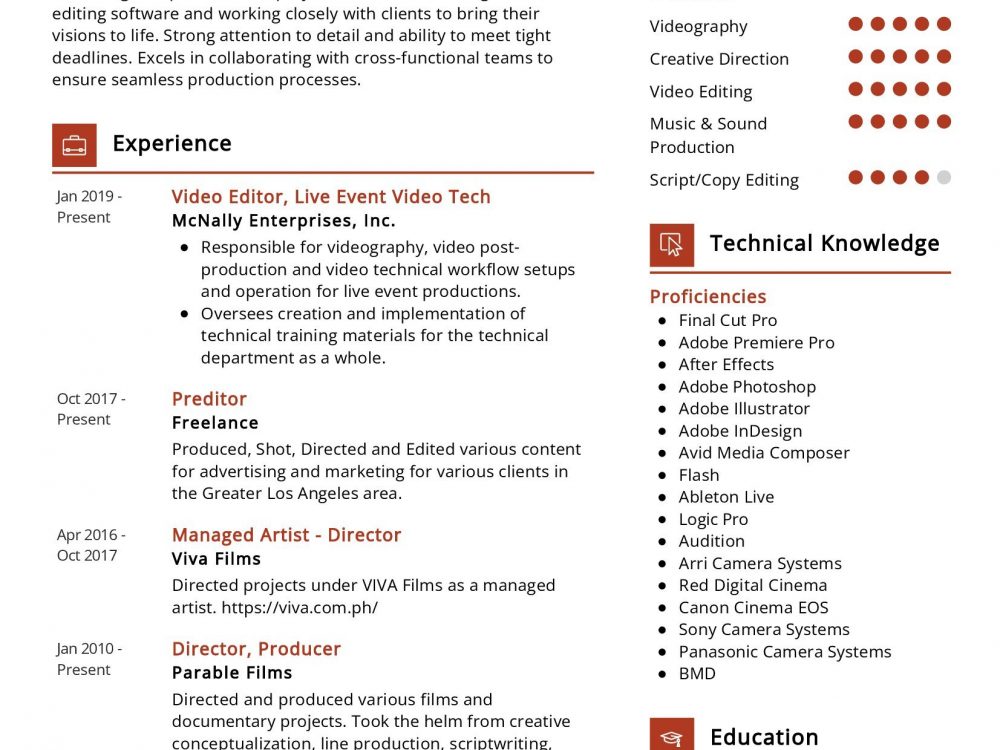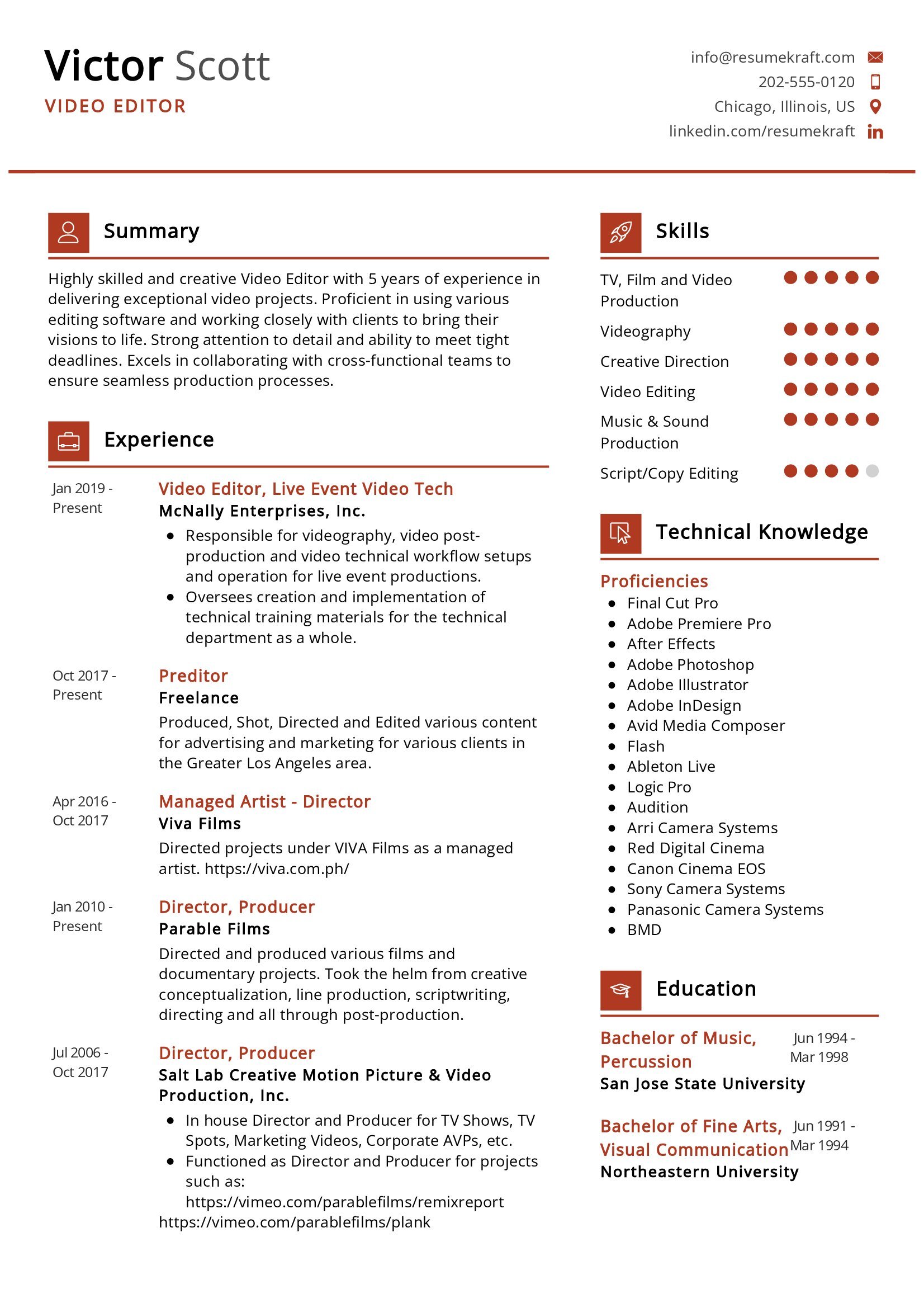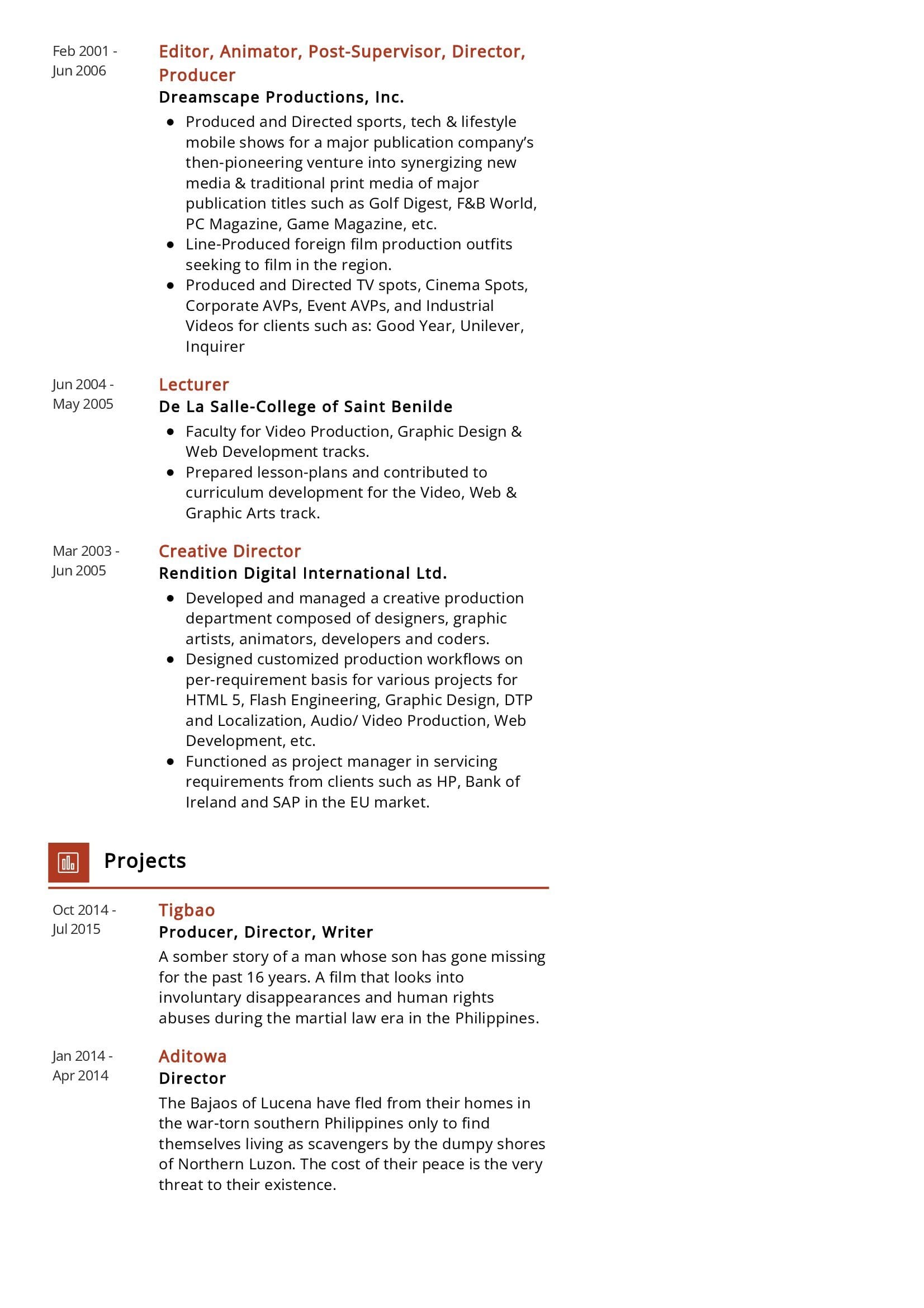What is the Role of a Video Editor?
In today’s digital age, the role of a Video Editor has become increasingly significant in various industries. Video content has exploded in popularity, making video editing a critical skill in the world of media and communication. Let’s explore the multifaceted role of a Video Editor, a position that demands technical expertise, creativity, and a keen eye for detail.
A Video Editor is responsible for shaping raw video footage into a polished, visually appealing final product. They play a crucial role in the post-production process, where they take the director’s vision and turn it into a reality. Video Editors work with various types of content, including movies, TV shows, advertisements, corporate videos, and more. Their role goes beyond simply cutting and splicing footage; it involves storytelling, creativity, and technical proficiency.
What are the Video Editor Job Requirements?
Becoming a Video Editor requires meeting specific requirements and developing a diverse skill set. It’s a profession that combines artistry with technical know-how. Here are the prerequisites for aspiring Video Editors:
- A Bachelor’s degree in Film Production, Video Editing, or a related field. While formal education is valuable, many successful Video Editors have also learned through hands-on experience and online tutorials.
- Proficiency in video editing software such as Adobe Premiere Pro, Final Cut Pro, or DaVinci Resolve. Video Editors should be comfortable with the tools of their trade.
- Creativity and an eye for detail. Video editing involves making creative decisions about shot selection, pacing, and transitions to tell a compelling story.
- Understanding of visual storytelling and film theory. Video Editors should know how to engage the audience and convey the intended message effectively.
- Strong communication skills. Video Editors often collaborate closely with directors, producers, and other team members, so effective communication is essential.
- Ability to work under tight deadlines and manage multiple projects simultaneously. Video editing projects often have strict timelines, and Video Editors must thrive in a fast-paced environment.
Additionally, staying updated with the latest video editing trends and technologies is crucial to excel in this field.
What are the Responsibilities of a Video Editor?
The responsibilities of a Video Editor are diverse and require a combination of technical skills and artistic sensibility. Let’s delve into the core tasks that define this role:
- Reviewing and organizing raw footage. Video Editors start by carefully going through all the footage to identify the best shots and moments to include in the final edit.
- Cutting and arranging footage. This involves selecting the right clips, arranging them in the desired sequence, and trimming as necessary to create a cohesive narrative.
- Adding transitions, effects, and graphics. Video Editors enhance the visual appeal of videos by incorporating transitions between scenes, adding special effects, and including graphics or text overlays when needed.
- Adjusting audio. Ensuring that the audio quality is top-notch is crucial. Video Editors may need to adjust levels, add background music, or include sound effects to enhance the viewer’s experience.
- Color correction and grading. Video Editors are responsible for ensuring consistent and visually pleasing color throughout the video. This step can greatly impact the overall mood and tone of the content.
- Collaborating with the creative team. Video Editors work closely with directors, producers, and other team members to bring the project’s vision to life. They incorporate feedback and make necessary revisions to achieve the desired outcome.
- Rendering and exporting. Once the video is edited to perfection, Video Editors render and export it in the appropriate format for its intended use, whether it’s for broadcast, online streaming, or other platforms.
- Staying updated with industry trends. To excel in the field, Video Editors must continuously learn about new techniques, software updates, and emerging trends in video editing.
Each responsibility requires precision and creativity, as well as the ability to collaborate effectively with others.
Video Editor Resume Writing Tips
Creating a compelling resume is essential for landing a Video Editor role. Your resume should reflect your skills, experiences, and passion for video editing. Here are some tips to help you craft an impressive Video Editor resume:
- Highlight your portfolio. Include a section that showcases your best video editing work. Provide links or clips that potential employers can easily access.
- Detail your software proficiency. Mention the video editing software you are proficient in, and if you have any certifications, be sure to include them.
- Quantify your achievements. Whenever possible, use numbers to demonstrate the impact of your work. For example, “Increased video engagement by 30% through effective editing.”
- Customize for the job. Tailor your resume for the specific position you’re applying for. Highlight relevant skills and experiences that match the job description.
- Include relevant keywords. Use industry-specific keywords in your resume to increase its chances of being discovered by applicant tracking systems (ATS).
Your Video Editor resume should be a reflection of your passion for storytelling through video and your ability to bring creative visions to life.
Video Editor Resume Summary Examples
Your resume summary is the first thing potential employers will see, so it’s important to make it impactful. Here are some examples to inspire your resume summary:
- “Creative Video Editor with a passion for storytelling through visuals. Proficient in Adobe Premiere Pro and experienced in editing a wide range of content, from short films to corporate videos.”
- “Detail-oriented Video Editor with a proven track record of enhancing video quality and engaging audiences. Skilled in color correction, audio editing, and graphic design for a polished final product.”
- “Experienced Video Editor with a knack for transforming raw footage into compelling narratives. Collaborative team player who thrives in fast-paced environments and delivers high-quality edits on time.”
Your resume summary should capture your unique strengths and set the stage for the rest of your resume.
Create a Strong Experience Section for Your Video Editor Resume
Your experience section is where you can showcase your skills and the impact you’ve had as a Video Editor. Here are some examples of how to detail your work experience:
- “Led video editing projects for a leading advertising agency, resulting in a 25% increase in client satisfaction and a 15% growth in repeat business.”
- “Collaborated with directors and producers on a feature film, contributing to the film’s selection for a prestigious film festival and positive critical acclaim.”
- “Managed a team of junior Video Editors, providing mentorship and training that improved overall editing quality and efficiency.”
Your experience section should demonstrate your ability to handle a variety of projects and your positive impact on the final product.
Sample Education Section for Your Video Editor Resume
Your education section should highlight your relevant academic achievements and any certifications related to video editing. Here’s an example of how to list your education:
- Bachelor of Arts in Film Production, XYZ University, Graduated in 2017.
- Certified Video Editor, Adobe Premiere Pro, 2018.
Your education section should emphasize your qualifications and commitment to your craft.
Video Editor Skills for Your Resume
As a Video Editor, your skill set is your toolbox for creating captivating videos. Here are some essential skills for a Video Editor’s resume:
Soft Skills:
- Creativity: The ability to envision and execute innovative video edits that engage and captivate audiences.
- Attention to Detail: A meticulous approach to editing, ensuring seamless transitions and visual consistency.
- Time Management: Effectively managing deadlines and juggling multiple projects simultaneously.
- Communication: Collaborating with directors and team members to bring their vision to life.
- Adaptability: Flexibility to adjust to changing project requirements and industry trends.
Hard Skills:
- Proficiency in Video Editing Software: Mastery of tools like Adobe Premiere Pro, Final Cut Pro, or DaVinci Resolve.
- Color Correction: Skill in adjusting and enhancing video colors for visual appeal and consistency.
- Audio Editing: Expertise in optimizing audio quality, including voiceovers, music, and sound effects.
- Graphic Design: Ability to create and integrate graphics, text overlays, and visual effects.
- Storyboarding: Planning and visualizing the sequence of shots to tell a compelling story.
Your skills are your strengths as a Video Editor, and they should be prominently featured on your resume.
Most Common Mistakes to Avoid When Writing a Video Editor Resume
When crafting your Video Editor resume, avoid common pitfalls that can hinder your chances of landing your dream job. Here are some mistakes to watch out for:
- Using a generic resume: Tailor your resume for each job application to highlight the skills and experiences that align with the specific position.
- Focusing too much on technical skills: While technical proficiency is essential, don’t overlook the importance of showcasing your creativity and storytelling abilities.
- Neglecting to include a portfolio: Your best work speaks for itself. Provide links or samples of your video editing projects to demonstrate your expertise.
- Omitting quantifiable achievements: Use numbers and metrics to quantify the impact of your work, whether it’s increased engagement, improved video quality, or successful project outcomes.
- Ignoring the cover letter: A well-crafted cover letter allows you to convey your passion and enthusiasm for the role. Use it as an opportunity to tell your story and connect with potential employers.
Avoiding these common mistakes will help you create a more effective Video Editor resume.
Key Takeaways for Your Video Editor Resume
As we conclude this comprehensive guide to crafting a standout Video Editor resume, here are key takeaways to keep in mind:
- Emphasize your creativity and storytelling abilities in addition to your technical skills.
- Showcase your portfolio to demonstrate your video editing expertise.
- Quantify your achievements with numbers and metrics to highlight your impact.
- Customize your resume for each job application, aligning it with the specific requirements of the position.
Finally, feel free to utilize resources like AI Resume Builder, Resume Design, Resume Samples, Resume Examples, Resume Skills, Resume Help, Resume Synonyms, and Job Responsibilities to create a standout application and prepare for the Video Editor job interview questions.
Now that you have the tools and knowledge to create an impressive Video Editor resume, it’s time to showcase your talent and pursue your passion in the world of video editing. Best of luck in your career!



